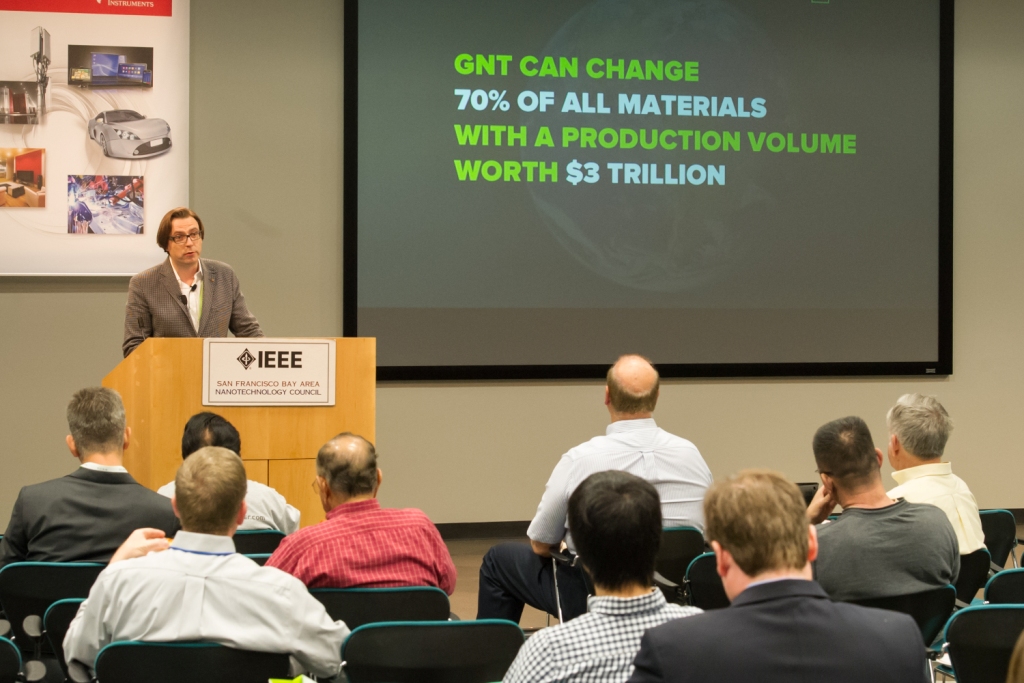(Palo Alto – 23 May 2014)
Speaking at The Institute of Electrical and Electronics Engineers’ (IEEE) SF Bay Area Nanotechnology Council monthly event in Santa Clara, California, OCSiAl chief technology officer Mikhail Predtechenskiy and vice president Gregory Gurevich demonstrated how carbon nanotubes can and have been successfully added into products using existing, standard manufacturing processes and facilities without the need for further investment or development.

Nanotubes are one atom thick sheets of graphene that are rolled into tubes , and is one of the strongest, lightest and most conductive materials known to mankind. OCSiAl recently announced a breakthrough in producing carbon nanotubes in bigger, better quality batches that was not possible before. The technology has succeeded in dropping prices to commercially viable levels for the first time, offering nanotubes for sale from $2,000 per k/g where the previous price was around $100,000 per k/g.
The following chart shows examples of current applications for carbon nanotubes, and demonstrates the level of commercial viability achieved:
|
Product |
Guide amount of nanotubes |
Cost |
Effect |
|
100mg |
$0.20 per unit |
Graphene nanotubes increasecycle life, adding approximate one year, allow to use more powerful hardware, and increase the safety of the lithium ion battery. |
|
|
2 grams |
$4 per unit |
Enhances fuel efficiency, durability and traction control at the same time. |
|
|
Conductive layer less than 100 nm thick |
$10 per m² |
90% transparency, 110 ohm/sq surface resistance achieved at 90% transparency making for a high contrast flexible screen. |
|
|
0.05% |
$2 per kg |
Tensile modulus and flexural strength of a carbon fibre reinforced polymer (CFRP) plate, widely used in sporting and automotive fields, is increased 35%. |
Source: OCSiAl
All OCSiAl results have been achieved as a part of industrial trials with partners, producing mass products. Carbon nanotubes will also increase the range of applications available in the future. Previous ‘blue sky’ technologies such as the possibility of building NASA and Google-X’s ‘space elevator,’ or the San-Francisco Hyperloop proposed by Elon Musk.

The world’s first nanotechnology
company,
Zyvex Technologies
, has already begun integrating
OCSiAl nanomaterials into their products. “The
use of SWCNTs could open the door to fundamental
change in many industries, but there has always been an invincible obstacle:
SWCNTs were only available in small quantities at sky-high prices, and quality
wasn’t guaranteed. OCSiAl helps make nanotechnology applicable for many
companies desperate for a commercially viable materials innovation,” said Lance
Criscuolo, President of Zyvex Technologies.
